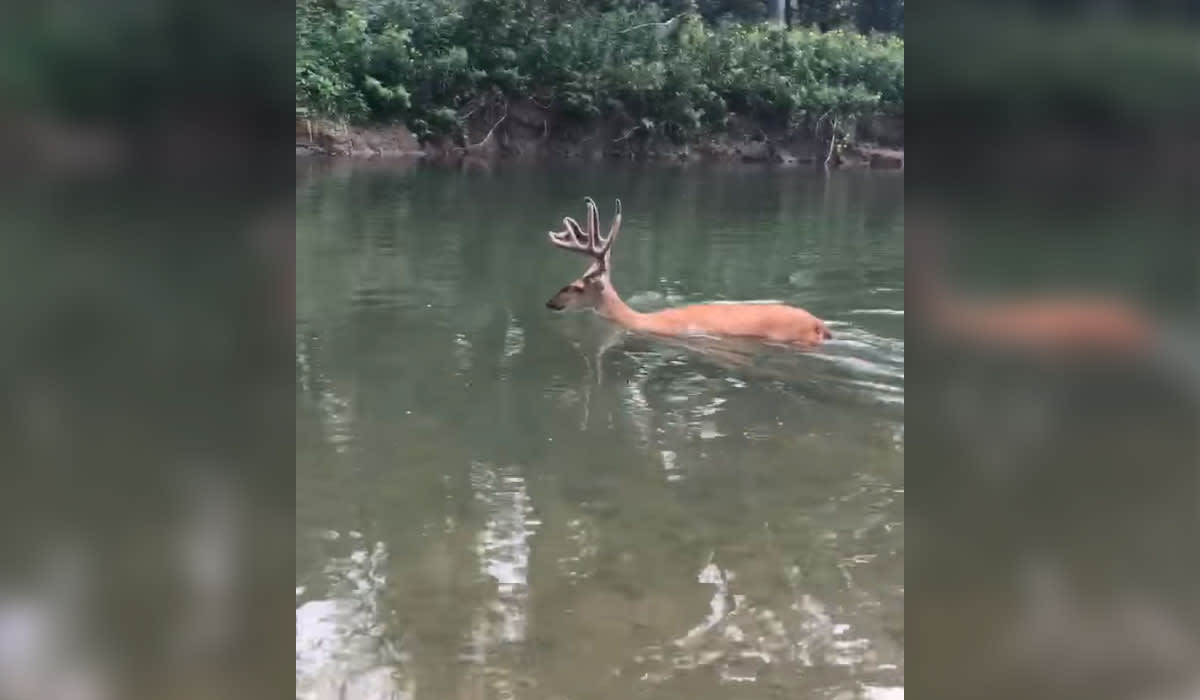Whitetail Buck Showing EHD Symptoms Walks Through Fire and Into Deep Water
OutdoorHub Reporters 09.05.19

Our friends over at Drury Outdoors shared an incredible video on their Facebook page last week showing a whitetail buck display some rather disturbing behavior. The deer is likely battling symptoms of Epizootic hemorrhagic disease, (EHD) and you won’t believe your eyes when you see what this buck does.
Like we said, seeing these animals in this state is entirely disheartening, but it highlights a serious problem in need of attention. Diseases like chronic wasting (CWD) and EHD continue to spread making videos like this one more and more common.
It was pretty obvious something wasn’t right with the deer when Jayson Cooper grabbed his phone and started filming, but there’s no way he expected this..
“Can you believe this! Jayson Cooper captured this incredible footage of the brutality of Mother Nature. It’s likely this buck was suffering from EHD.
These poor animals absolutely burn up and will do anything to cool down…including drown themselves, like this buck did.”
Did you see him walk right through that fire?!
It appears whatever is affecting this deer has ravaged all its senses, as well as its natural instincts to run from danger. Scary!
Here’s some information on EHD courtesy of Ohio Department of Natural Resources:
- Does not affect humans nor does it impact the safety of consumed venison.
- Caused by the bite of an infected midge (a type of fly) and once there has been a hard freeze, these insects die off for the winter, eliminating new cases of EHD.
- One of the most common diseases of white-tailed deer in the United States.
- Outbreaks often associated with drought.
- Can result in high deer mortality in some areas but populations usually bounce back within a few years.
- Midwestern deer populations have developed little resistance to EHD and are likely to die within three days following the onset of symptoms.
- Carcasses are often recovered near water.
- There is currently no treatment for EHD in wild populations.
EHD Symptoms:
- Symptoms vary and usually develop about seven days after exposure.
- Deer appear disoriented and show little or no fear of humans.
- Animals may appear feverish.
- Pronounced swelling of head, neck, tongue, and eyelids
- May have respiratory distress.
EHD Transmission:
- EHD does not pose a serious threat to livestock (according to the Ohio Department of Agriculture).
- The virus deteriorates in fewer than 24 hours after death and cannot be spread from deer carcasses.
- No risk has been shown to be associated with direct exposure to the virus or in consuming a deer that has been infected with the virus.
- To be cautious, never kill or eat a sick deer. Depending on the actual illness, the deer may be unfit for consumption. Without testing, we cannot be certain what a sick deer is suffering from.
- Use rubber gloves to field dress deer.

